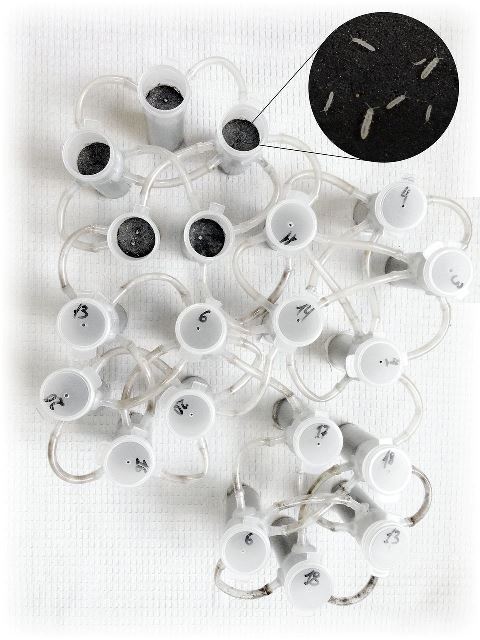Networks with a modular structure are expected to have a lower risk of global failure. However, this theoretical result has remained untested until now. An experimental microarthropod (Folsomia candida) metapopulation was used to test the effect of modularity on the response to perturbation. One local population was perturbed and the spread of the impact of this perturbation was measured, both within and between modules. Results show the buffering capacity of modular networks. To assess the generality of these findings, then a dynamical model of the system was analyzed. In the absence of perturbations, modularity is negatively correlated with metapopulation size. However, even when a small local perturbation occurs, this negative effect is offset by a buffering effect that protects the majority of the nodes from the perturbation. informacion[at]ebd.csic.es: Gilarranz et al (2017) Effects of network modularity on the spread of perturbation impact in experimental metapopulations. SCIENCE 357: 199-201 DOI 10.1126/science.aal4122
http://science.sciencemag.org/content/357/6347/199.full
Welcome
Welcome to the official website of the Doñana Biological Station (EBD-CSIC)...

The Doñana Biological Station: EBD-CSIC
The Doñana Biological Station is a public Research Institute belonging to the Spanish Council for Scientific Research CSIC in the area of Natural Resources...

Mission
Our fundamental mission is to carry out multidisciplinary research of the highest standard directed to understanding the way in which biodiversity is generated, maintained and deteriorates, as well as the consequences of its loss...

Our methods
We apply many techniques within a multidisciplinary framework, from molecular genetics to remote sensing, and from modelling to physiological and isotopic analyses...

Monitoring the environment
Monitoring biodiversity at the Doñana Natural Space cover a wide range of communities, including both terrestrial and aquatic organisms...

Aims
Our aims include the study of the ecological and evolutionary processes by combining field work, mathematical and statistical models and physiological and genetic analysis...
 News
News
 Las altas temperaturas están provocando que las lagunas y las marismas de Doñana pierdan agua rápidamente
Las altas temperaturas están provocando que las lagunas y las marismas de Doñana pierdan agua rápidamente
 Traffic noise causes lifelong harm to baby birds
Traffic noise causes lifelong harm to baby birds
 Illegal wildlife trade, a serious problem for biodiversity and human health
Illegal wildlife trade, a serious problem for biodiversity and human health
 Urbanization and loss of woody vegetation are changing key traits of arthropod communities
Urbanization and loss of woody vegetation are changing key traits of arthropod communities
The loss of woody areas is linked to a decline in the duration of the activity period, a higher tolerance to drought, and less dispersal capacity in both groups.






